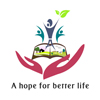Livelihoods
Adarsh Shiksha Samiti
Agriculture and Livestock
Recurrently faced with drought, farmers have to routinely cope with situations of food and income shortages. Though agriculture is the primary occupation of most households, meagre landholding, low production and the rain-fed nature (25% of the area under agriculture is irrigated) of agriculture make it a low-income generating occupation for the households. Lack of knowledge/ use of modern agriculture techniques and practices, use of low-yielding seeds, and low use of fertilizers are some other reasons for low productivity in Agriculture. Livestock or Animal Husbandry is another component of their livelihood profile.

Training & Capacity Building
Some training for target groups has been conducted by the organization personnel on the scientific method of rearing the goat. New and improved methodologies and technologies have been taught to them scientifically. The local veterinary doctor and other resource persons who are experts have been engaged with training for better implementation. Visits to beneficiary homes show that the training was effective and most beneficiaries are trying to manage their goats as trained during an organised capacity-building program.

Formation of Goat rearing groups
We have promoted community-based cooperatives and work through the goat rearers association as a platform to undertake goat rearing management, production, and marketing practices in a more organised manner to reduce risk and increase income. We have created awareness and education on the cooperative, the advantage of goat rearing and help the community to build them so as to enable them to organize easy, flexible, and cost-effective financial services, leverage technical resources, gain input supply, undertake production planning and carry out marketing services in goat rearing In the three years 550 poor women organised into 50 Goat rearing groups in five villages.

Training of Pashu Sakhi
We have trained 5 poor women in respect to providing scientific methods of Goat rearing at door steps of local beneficiaries these Pashu Sakhi supervised under para vet and have been becoming able to implementation of her services i.e. health camp; medical care and nutrition of Goat etc. camp; playing their role during a frequent visit to the spot and supervising the situation and also giving required guidance to beneficiaries. We have also distributed 50 male Sirohi bucks among 600 female goats for scientific improvement in the local breed of goats. Now the number of goats is increasing for the future development of beneficiaries. The target of castration of existing local buck was not achieved due to lack of community interest but in the second year, such type of service will be performed frequently, the performance and service carried out by this pashu Sakhi.

Goat Development Program
We have purchased the improved breed of goat (Sirohi) from the Bhilwara camp; made the purchasing process in accordance with the veterinary doctor considering the breed pedigree weight, height, strength estimation, etc. The cost-benefit analyses have been also taken into account before buying camps; distributing them.

Plantation of Fodder Tree
During the first year we have raised a nursery of 15000 fodder plants to envisage a major drive to encourage optimum use of farm bunds camp; wasteland under agroforestry patterns in the rainy season. In the future, it will ensure a sustainable supply of green fodder, particularly in the summer season. The survival of planted trees will be enhanced by introducing survival-based maintenance incentives for all planted trees in the project period.
